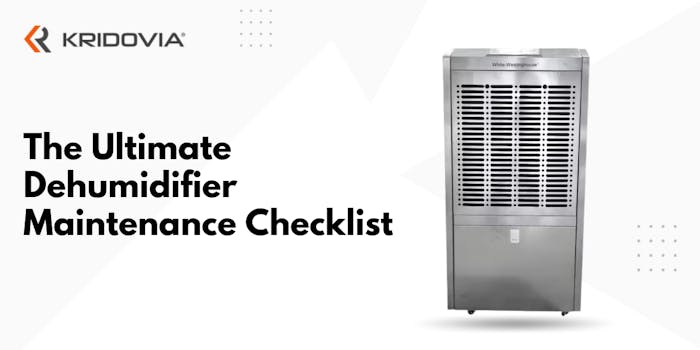Frequently Asked Questions
1. Do dehumidifiers need maintenance?
Regular cleaning, at least once every few weeks, is a vital part of keeping it in good condition, particularly during times of high use.
2. How do you clean and maintain a dehumidifier?
1. Switch off your dehumidifier.
2. Clean the outside.
3. Wipe the reservoir clean.
4. Clean the air filter with water.
5. Vacuum.
6. Take the bucket filter out and clean it.
3. What is the best way to clean a dehumidifier?
Fill a spray bottle halfway with vinegar and half with water. Spray the mixture into the tank of the dehumidifier. Before cleaning the tray with a sponge, scrub brush, or even a toothbrush, let the spray stay on the surface for a while. By using a soft bristle brush to clean the grille, you can clean the filter and coils.
4. How do you maintain a dehumidifier filter?
Before removing the filter and using a vacuum to remove as much dust and debris as you can, unplug the dehumidifier first. Finally, use warm, soapy water to wash the filter. Clean this thoroughly to remove any remaining soap, and then let it air dry completely before reinstalling in the appliance.
5. How long do dehumidifiers last?
Dehumidifiers typically last between five and ten years. It's crucial to take care of your dehumidifier to extend its lifespan. Make sure you routinely replace the air filters, clean the exhaust grilles and condensing coils, and empty and wash the water bucket.
6. What is the difference between a humidifier and a dehumidifier?
When the air is excessively dry, humidifiers add moisture to the atmosphere. In order to offset the dryness of winter air, individuals typically utilise humidifiers throughout this season. When the air is overly humid, a dehumidifier removes moisture from the atmosphere. The spring and summer are when dehumidifiers are used.
7. How long does it take for a dehumidifier to work?
A dehumidifier will often reduce the humidity to the selected level in a few days to a week as long as it is large enough for the space it is working in and there are no particular wet problems.
8. What is a dehumidifier used for?
A dehumidifier is an electrical appliance that lowers and regulates the air's humidity. These devices are bought by consumers to get rid of musty smells and stop mildew from growing.
9. Will a dehumidifier always collect water?
To collect the water extracted from the air, every portable dehumidifier has a water collection container, frequently referred to as a tank or a bucket.
10. Do you put water in a dehumidifier?
Water is not required for a dehumidifier to function. Instead, dehumidifiers draw moisture from the air and hold it in a tank as water.
11. How long does a dehumidifier take to work?
After a few days to a week, a dehumidifier will typically bring the humidity down to the desired level.
12. Do dehumidifiers clean the air?
A dehumidifier cannot clean indoor air of airborne pollutants. Instead, it will eliminate moisture and lower the relative humidity in your home, making it less conducive to the development of mold and dust mites.
13. How many dehumidifiers do I need?
Divide the number of pints required to dry the space by your dehumidifier capacity to find the number of dehumidifiers needed.
14. How to clean the dehumidifier filter?
The air filter should be located and gently cleaned with a sponge and soapy water. Before reinstalling it, let it thoroughly dry.










